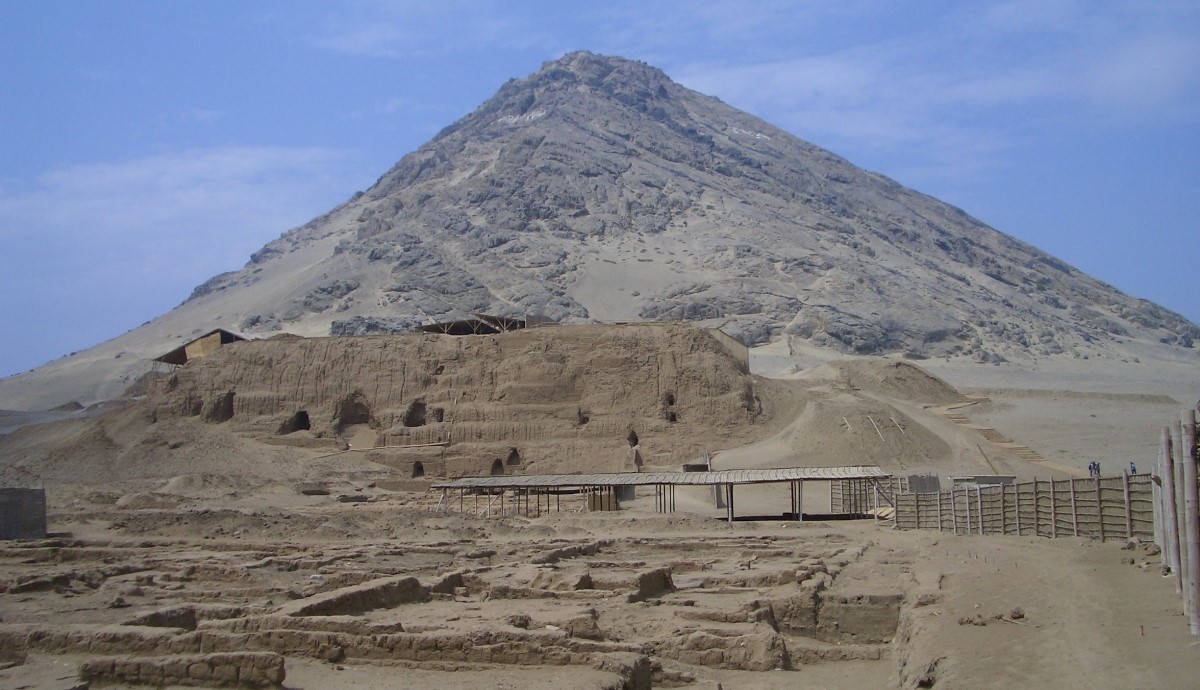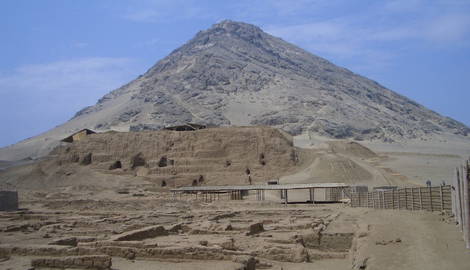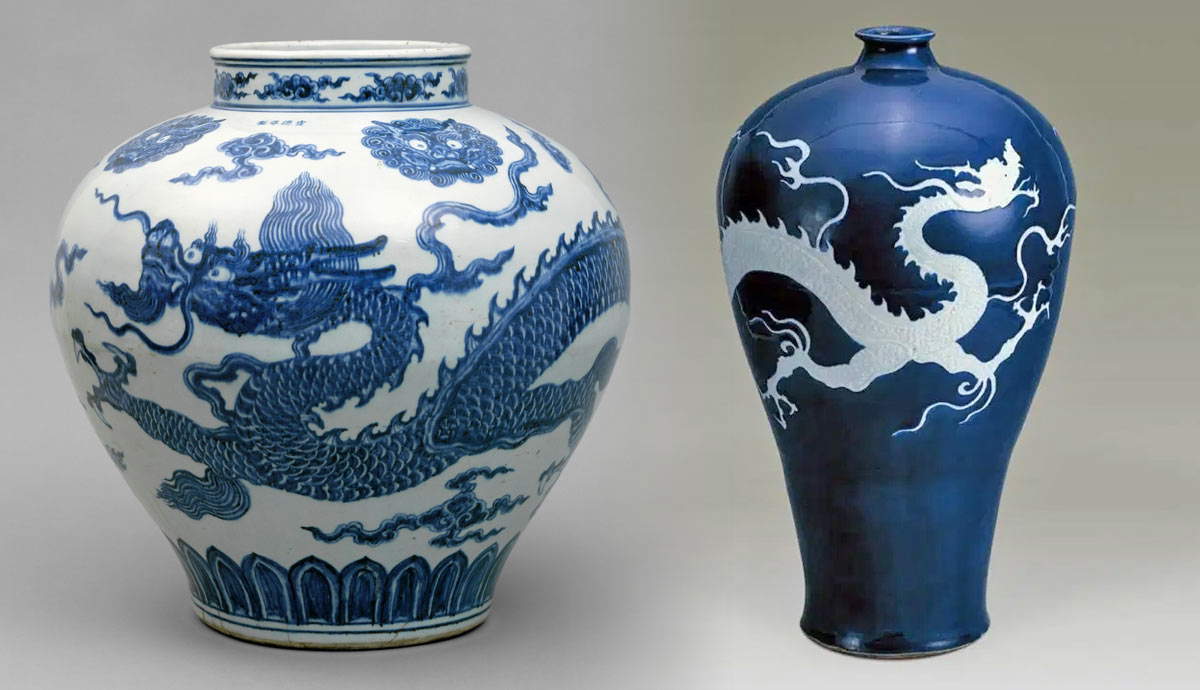
Most people traveling through Peru head south, enticed by big-ticket highlights like Machu Picchu, Cusco, the Sacred Valley, or the Amazon. But in the north, hidden treasures abound. This dry, coastal region was once home to the Moche, a powerful pre-Inca culture known for its massive temples, advanced irrigation, and striking, intricately painted ceramics. Their legacy remains here, scattered across the arid region. Far less visited than Peru’s southern highlights, Northern Peru offers a rare chance to explore an older, often overlooked chapter of Andean history, one that’s just as fascinating.
Who Exactly Were the Moche?
The Moche civilization thrived along Peru’s northern coast between roughly 100 and 800 CE. They never built a formal empire, as such, but their influence stretched across a wide network of valleys. Known for their exceptional engineering skills, they turned an inhospitable arid desert into farmland using complex irrigation systems.
The Moche were also skilled metalworkers, producing delicate gold and copper objects. But not every aspect of their story is beautiful. Ritual sacrifice, elite burials, and strict social hierarchies were also part of everyday life for the Moche, as was the case for many ancient cultures the world over.

Power, Ritual, and the (Super)Natural World
The Moche didn’t leave behind any written records, so most of what we know about them comes from what they built and buried, like their temples, tombs, and above all, their pottery. These ceramics are incredibly detailed. They show scenes of farming, fishing, battle, and even human sacrifice. In a world where writing didn’t exist, these images became the record.
What they reveal is a culture where power, nature, and the spiritual world were tightly connected. The Moche believed life and death were part of a cycle that had to be kept in balance through ritual offerings. Some ceremonies likely took place at temples like Huaca de la Luna, where raised platforms were used for public displays. Sacrifice wasn’t just a show of force but, as they saw it, a way to keep the land fertile and their world in order.
When you walk through these archaeological sites, try to picture them not just as ancient ruins, but as places where spiritual belief was once acted out in very concrete ways.
Where to Explore Moche History in Northern Peru
If you want to understand the Moche, the best place to start is near Trujillo, a coastal city with fantastic ceviche and several major archaeological sites just a short drive away.
Huaca de la Luna (Temple of the Moon) and Huaca del Sol (Temple of the Sun)
These two massive adobe structures once anchored the Moche capital. Huaca de la Luna is the better preserved, with layers of painted murals, ceremonial platforms, and buried offerings uncovered by archaeologists over the past few decades. You can walk through the site with a guide, who’ll point out details like the faces of Moche deities still visible on the temple walls. Across the river, the larger but more eroded Huaca del Sol is still mostly unexcavated, but its scale alone is impressive. Some estimates say it once had over 140 million bricks.

El Brujo and the Lady of Cao
Head a little further north to visit the El Brujo complex, site of the discovery of the Señora de Cao. This obviously high-ranking woman, with elaborate tattoos still visible on her skin, was buried with all sorts of ceremonial objects. The discovery was a major turning point in how archaeologists understood power and gender roles in Moche society. The museum is excellent, and the startling location, on a dramatic arid bluff overlooking the Pacific, is just one more reason to visit.

The Royal Tombs of Sipán
The discovery of Sipán in the late 1980s was a game-changer for Peru and, particularly, the northern region. Often called the “Tutankhamun of the Americas,” the Lord of Sipán was found buried with an extraordinary collection of gold, silver, and copper ornaments, along with sacrificed guards, animals, and offerings. The tomb had remained untouched for over a thousand years.
Although you can visit the original burial site in Huaca Rajada, the real draw is the nearby (spectacular) Royal Tombs of Sipán Museum in Lambayeque. The museum is modern, drop-dead gorgeous, and displays many of the treasures exactly as they were found.

Túcume and Beyond
While Túcume is mostly associated with the later Lambayeque culture, it overlaps with Moche influence and offers a fascinating look at how northern cultures evolved. The site includes dozens of adobe pyramids spread over a wide desert plain. It’s easy to visit from Chiclayo and pairs well with a stop at the Brüning Museum, which also has Moche artifacts.
Don’t Skip Chan Chan!
It might not be Moche, but it would be criminal to explore northern Peru and miss Chan Chan. Just outside Trujillo lies Chan Chan, the vast adobe capital of the Chimú. The Chimú rose to prominence roughly a century or two after the decline of the Moche and remained dominant on Peru’s north coast until the Inca conquered them around 1470 CE.
At its height, Chan Chan was the largest city in pre-Columbian South America. What’s left today is a vast complex of ceremonial courtyards, corridors, and decorative walls that still hold incredible detail. The scale alone is worth the visit—and it helps connect the dots between Peru’s coastal cultures. Many archaeologists believe the Chimu built on Moche foundations, both literally and culturally, so seeing both adds context to the region’s long and very layered history.
A visit to Chan Chan typically starts at the Nik An Palace complex, the most accessible and best-restored part of the site. Walking through its corridors gives you a sense of the city’s original scale. The fish and bird motifs carved into the adobe walls reflect the Chimu’s close connection to the sea. Bring a hat and water and load up on the sunscreen. This area is hot and dry, and there’s very little shade. But the reward is seeing one of the most impressive adobe cities ever built, anywhere.

How to Visit the Land of the Moche
Most travelers base themselves in either Trujillo or Chiclayo, two mid-sized cities along the northern coast. Trujillo gives easy access to Huaca de la Luna, Huaca del Sol, and El Brujo. while Chiclayo is your jumping-off point for Sipán, Túcume, and the Royal Tombs Museum in Lambayeque. Both cities are connected by frequent flights from Lima and have solid hotel options.
If you’re short on time, Trujillo is a great base for a few days of archaeological exploration. But if you can, combining both regions gives you a much fuller picture of the Moche world. Guided tours are available, but it’s also possible to visit independently by hiring local taxis (bartering is a must) or using regional bus lines.
The dry season from May to October is the best time to visit, when temperatures are mild, and there’s little rain. Most museums are open daily, and entrance fees are very affordable.
The region isn’t overrun by tourists, which means fewer crowds and less English signage. Although you don’t need to be a history expert to enjoy the region, you’ll likely leave wanting to learn more. Bringing a simple field guide or doing a little reading in advance can really enhance the experience, especially when interpreting murals or museum displays. Many travelers say Northern Peru feels refreshingly real and wonderfully authentic. It’s a chance to explore ancient cultures without the crowds, price tags, or polished staging of more popular sites. If you’re looking for something different, this part of Peru delivers in spades and in subtle, fascinating ways.









